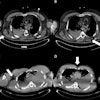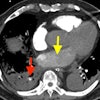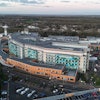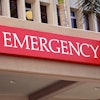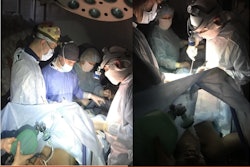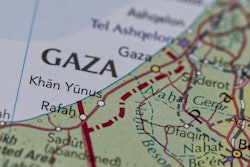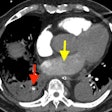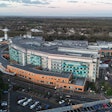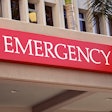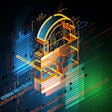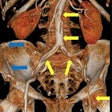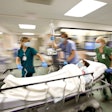Imaging and radiology centers are among the least affected hospital services in Ukraine since the start of the Russian invasion in February 2022, a study published on 17 May in JAMA Health Forum has found. However, a doctor who has worked in Lviv, Ukraine, since 2019 insists that the invasion has had a major impact on imaging services.
A team led by Ubydul Haque, PhD, from the Rutgers Global Health Institute in New Brunswick, New Jersey, U.S., found that such services have experienced a slight decrease in availability, while services for cancer screening, laboratory testing, and gynecological care, among others, have been the most impacted.
"The ongoing war has inflicted profound devastation on Ukraine's hospitals," the Haque team wrote. "The findings of this cross-sectional survey offer valuable insights into the formidable challenges that hospitals confront in war-affected regions and underscore the pressing necessity for bolstering support to sustain and enhance hospital services during wartime."
Since February 2022, reports have described the impact of the war on health services. Radiologists in Ukraine have shared stories on their experiences, from living in the basement of their respective clinics to treat patients while evading bombings, to adjusting their workflows to continue delivering care. A July 2022 missile attack in Vinnytsia killed radiology staff and civilians.
War has forced hospitals in Ukraine to close or reduce their health services due to inadequate supplies, damage, or destruction, Haque and colleagues noted. They analyzed these services during the periods before and after the start of the Russian invasion. The survey study included 74 Ukrainian hospitals from 12 oblasts (regions or provinces). The periods included were prewar (February 2022) and during the first 17 months of the war (February 2022 to May 2023).
Daily emergency admissions increased from 2,773 prewar to 2,830 during the war. The researchers reported that imaging and radiology centers were among the least affected services since the start of the war. These services decreased from 55 (74% functionality) to 51 (69%). Other services that experienced lesser impacts included routine pediatric services, intensive care units, dialysis centers, addiction treatment centers, and obstetric deliveries.
The most affected services included laboratory testing (97% to 85%), tobacco education (70% to 49%), cancer screening (66% to 50%), gynecological services (58% to 43%), rehabilitation services (50% to 36%), pharmacy services (49% to 36%), and telehealth programs (45% to 28%).
Finally, respondent hospitals reported the following additional difficulties faced during the war: supply chain disruptions for essential equipment and pharmaceuticals, laboratory test kit shortages, delays in the delivery of crucial medications, and power outages causing problems for appropriate medication storage.
The study authors suggested that through international support, responses that are prioritized and "well-considered" can address needs for Ukrainian hospitals while also restoring essential health services that have been lost to destruction from the war.
"Priorities for public health services in the short to medium term can be to ensure appropriate surveillance, preparedness, and responses to communicable disease threats or outbreaks, expected as a result of lapses in preventive care," the authors wrote.
Clinical reality in Ukraine today
Responding to the JAMA report, Dr. Uliana Pidvalna, PhD, from Danylo Halytsky Lviv National Medical University in Lviv, noted that radiology has been affected greatly by the war. She told AuntMinnieEurope.com on 17 May that at an imaging center in Lviv, an experienced specialist is working on the frontline and another doctor has moved abroad, which has had a significant impact on the number of endovascular procedures performed and the distribution of more duties to other radiology staff.
She said that people who have been displaced from the war have nothing after their homes were bombed, meaning increased poverty, increased prices for medical supplies, and a decreased number of procedures. Also, cyberattacks which Pidvalna described as “frequent” have made communications with patients difficult.
“We can’t work effectively being under stress for two-plus years,” said Pidvalna, a member of the editorial board for the journal European Radiology and the Ukrainian delegate on the education committee member of the European Society of Radiology. She added that there is “no possibility” to perform contrast-enhanced CT in the Donetsk region of Ukraine and that larger radiology vendors cannot install new CT machines in the country “while there is no insurance in case of damages caused by war.”
Pidvalna also pointed to the difficulty of gathering reliable data in her country because many hospitals have been destroyed and medical staff are prioritizing patient care. "Is it possible to reach a hospital with a request for information while they are under a rocket attack? If hospitals receive a call for participation, will they participate in this survey, having 100+ injured patients per day?"
The JAMA study can be found in its entirety here.
